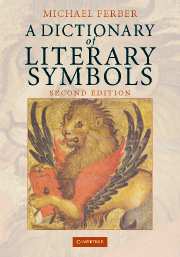Introduction
Published online by Cambridge University Press: 10 June 2014
Summary
The idea for this dictionary came to me while I was reading a student essay on Byron's “Stanzas Written on the Road between Florence and Pisa,” which sets the true glory of youthful love against the false glory of an old man's literary renown. After a promising start the student came to a halt before these lines: “the myrtle and ivy of sweet two-and-twenty / Are worth all your laurels, though ever so plenty.” His copy lacked footnotes, and he lacked experience of poetry before the Romantics. With disarming candor he confessed that he had no idea what these three plants were doing in the poem, and then desperately suggested that Byron might have seen them on the road somewhere between Florence and Pisa and been inspired to put them in his poem the way you might put plants in your office. I wrote in the margin that these were symbolic plants and he had to look them up. But where, exactly, do you send a student to find out the symbolic meaning of myrtle? The Oxford English Dictionary was all I could come up with, but I felt certain there must be a handier source, designed for readers of literature, with a good set of quotations from ancient times to modern. But there is no such book.
A dozen times since then I have asked colleagues and librarians if they knew of one.
- Type
- Chapter
- Information
- A Dictionary of Literary Symbols , pp. 1 - 6Publisher: Cambridge University PressPrint publication year: 2007



